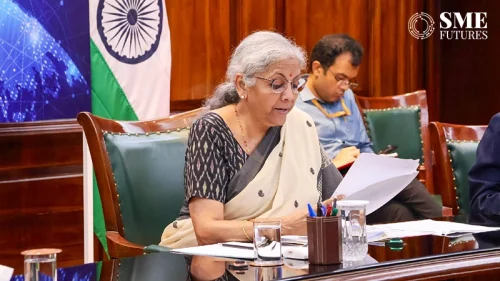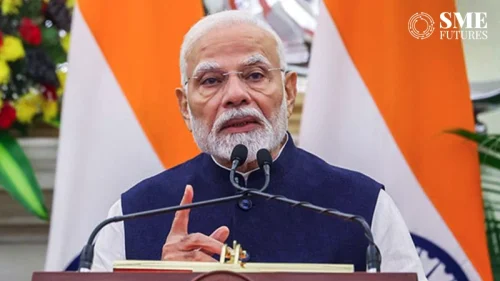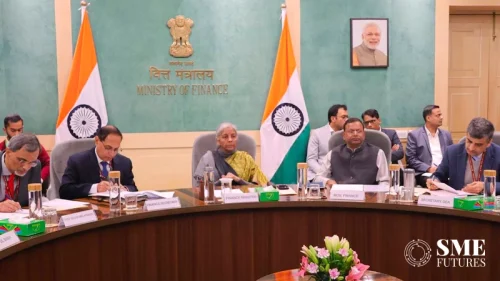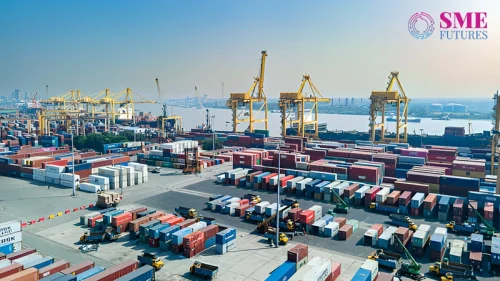The Indian economy is on the upswing and is growing exponentially. According to a report by IDBI Capital, the Indian economy is on the verge of a major transformation, aiming to become a USD 10 trillion economy by 2032, positioning itself as the third-largest economy globally by 2030. The report says that our economy will add USD 1 trillion to its GDP every 1.5 years over the next six years. To make the development more concrete, the Associated Chambers of Commerce and Industry of India (ASSOCHAM) is playing a pivotal role in shaping the economic landscape by working with the industry and the government in nation-building. SME Futures spoke to Deepak Sood, Secretary General, ASSOCHAM, to learn how the different sectors are placed, how good the investment climate is, and what kind of push is being given to green policies.
Here are excerpts from the interview:
What is the outlook for Indian industrial growth, considering global economic headwinds and the country’s internal challenges?
India stands out as the fastest growing economy amongst the major economies of the world. In the first quarter ending June 2024, manufacturing, which accounts for the bulk of industrial production, grew by 7 per cent. We expect the trend to further pick up in the third and fourth quarters as the festival seasons kick in. Private consumption and the consequent demand remain strong, acting as tail winds, while global head winds may affect exports in some manufacturing sectors. We need to be watchful about the global risks.
How can India enhance the competitiveness of its manufacturing sector, both domestically and globally?
India is aspiring to be a global hub in manufacturing, integrating itself with the cross-border supply chain. Some of the successes are evident in sectors like electronics, mobile phones, automobiles and auto components. Even a strategic sector like defence production has emerged as a bright spot in Indian manufacturing. Schemes like Production Linked Incentives have been great hits amongst domestic and global investors. A continuous focus on physical infrastructure like ports, airports, railways and highways will go a long way in bringing down the cost of logistics and give a competitive edge to the Indian industry. Pharmaceuticals have been another area of success and a focus on medical devices will yield dividends in the medium to long term.
How crucial are SMEs and MSMEs to India’s industrial growth?
SMEs and MSMEs are undeniably the backbone of the Indian economy, contributing approximately 40 per cent of industrial production and 45 per cent of merchandise exports. Their importance extends beyond mere statistics; these enterprises are integral to fostering innovation and entrepreneurship across the country. Their contribution to job creation is particularly noteworthy, providing employment opportunities to millions, especially in rural and semi-urban areas, where large-scale industries may not have a significant presence. This employment generation fuels both consumption and investment, which are key pillars in driving India’s GDP growth towards a sustained trajectory of over 7 per cent. Additionally, SMEs and MSMEs act as critical suppliers and partners to larger industries, facilitating a robust industrial ecosystem that supports the overall economic development of the nation. However, they face challenges such as access to finance, technological upgradation, and market access, which need continued policy support to unlock their full potential and further accelerate India’s industrial growth.
How would you assess the current investment climate in India, and what specific measures are needed to attract both domestic and foreign investment?
India is offering a compelling investment climate to investors as global MNCs seek to diversify their supply chains and mitigate risks. India, with various incentives like the PLI scheme, has emerged as an attractive destination for global investment, especially in key sectors such as electronics and semiconductors. 100 per cent FDI is allowed in various sectors while repatriation of remittances is allowed in a seamless manner. Our corporate tax structure too is competitive to attract investment. The government has taken several steps in improving Ease of Doing Business and we need to continue efforts in this direction even as next generation land and labour reforms are required to further enhance our competitiveness.
How can India address the skill gap in the manufacturing sector and ensure a steady supply of skilled labour? What is the role of technology and automation in transforming Indian manufacturing, and what support do industries need to embrace these changes?
The government has come out with major apprenticeship schemes in the union budget. ASSOCHAM will work with the industry and the government to formulate the fine prints of these schemes. Research and engineering institutions across the value chain would need to be continuously scaled up, adopting new technologies like block chain and AI to meet the requirements of the future. A lot of emphasis is also required by state governments on training and skill development in industries like electronics and automobiles including electric vehicles.
How can Indian industries balance environmental sustainability with economic growth, and what policies can incentivise green practices?
India is ahead of the curve when it comes to green technology and the path to sustainable economic growth. The budget has unveiled a slew of measures for the promotion of new and renewable sources of energy, including solar and wind energy. Critically, the government is working on a roadmap for the transition to green energy while balancing our overall economic growth targets. ASSOCHAM recommends the continuation of subsidies for electric mobility among other fiscal measures for mitigating climate change risks.











